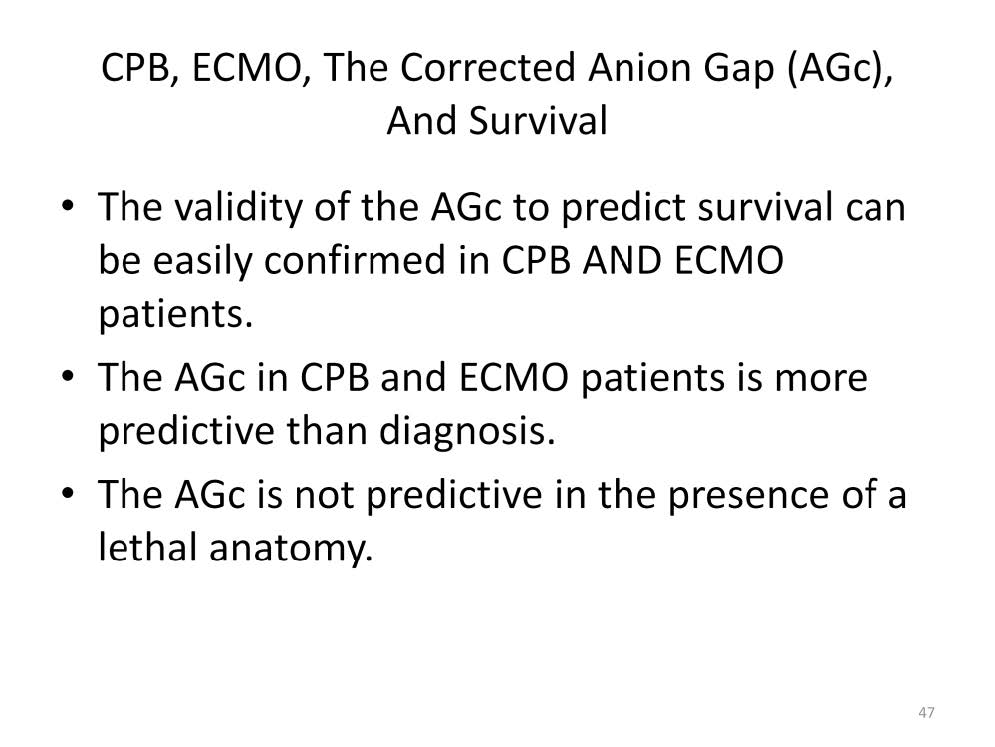
The assessment value of the AGc can be applied to extracorporeal support patients, particularly ECMO patients who are ideal subjects for the observational study of the oxygen pressure field. ECMO patients require maximum medical support prior to ECMO. They are then rescued from death at the last moment by placing them on a heart/lung pump. This is followed by frequent lab testing to monitor their progress. If the lethal corner really exists and can be detected, the best place to search for it is in ECMO patients.
The great variety of diagnoses in ECMO patients tests the theory that a large lethal corner (rather than a specific diagnosis) is the primary cause of severe complications and death, in the absence of a lethal anatomy. For example, patients with meconium aspiration syndrome (MAS) have a 94% national survival rate on ECMO. Only those MAS patients with a lethal corner should experience a severe complication or death. A review of 45 patients undergoing ECMO for MAS at Children’s Mercy Hospitals and Clinics (CMH) in Kansas City, Missouri, demonstrated 43 survivors and 2 expired patients (95.5% survival). Only the two expired patients had elevated AGc values averaging 20 mEq/L during the ECMO treatment. In another example, group B streptococcus (GBS) septicemia patients have a national survival rate of only 77% on ECMO. Of 15 GBS patients at CMH there were 2 non-survivors (86.7% survival) and they both had average AGc values exceeding 20 mEq/L. As illustrated by these two examples, an elevated AGc value is more predictive of poor outcome than the diagnosis in ECMO patients who do not have a lethal anatomical defect.

Perfusion Theory is an educational platform for the Oxygen Pressure Field Theory (OPFT). August Krogh’s theoretical concept of the oxygen pressure field is explained and then applied to clinical applications in perfusion practice.